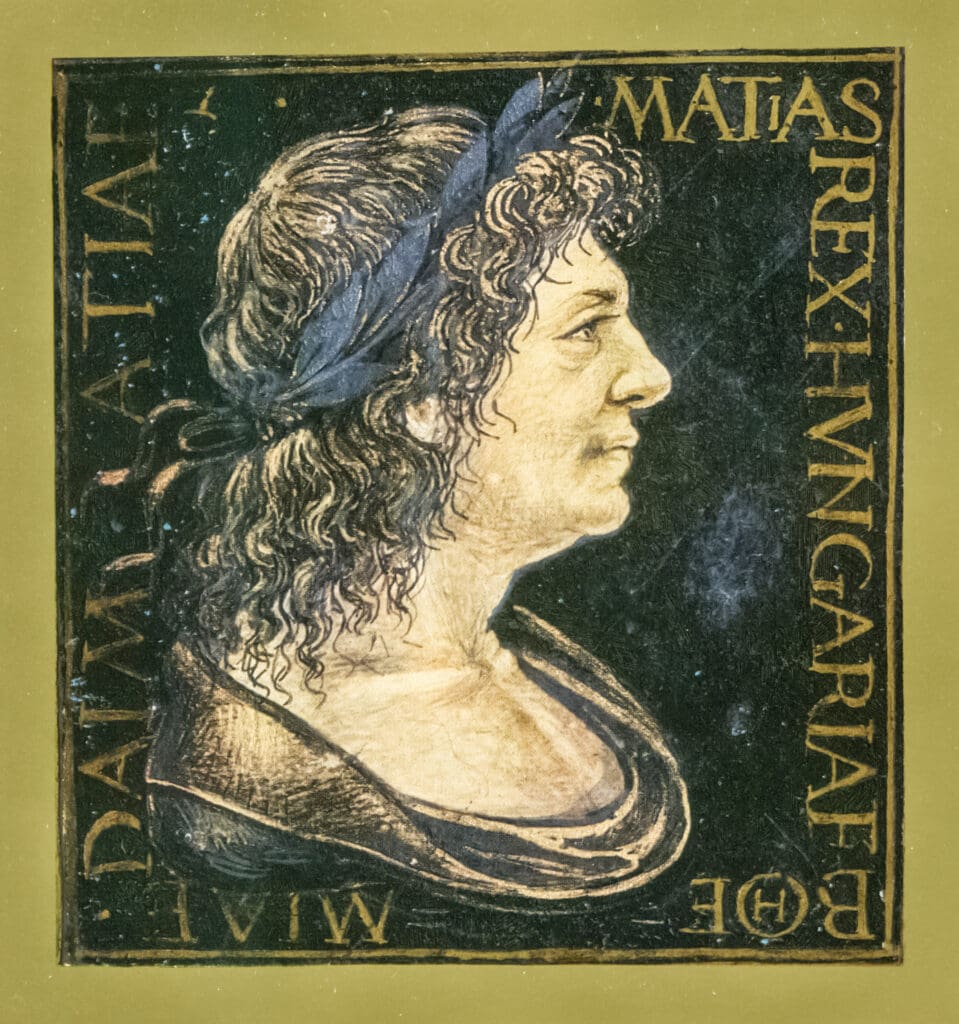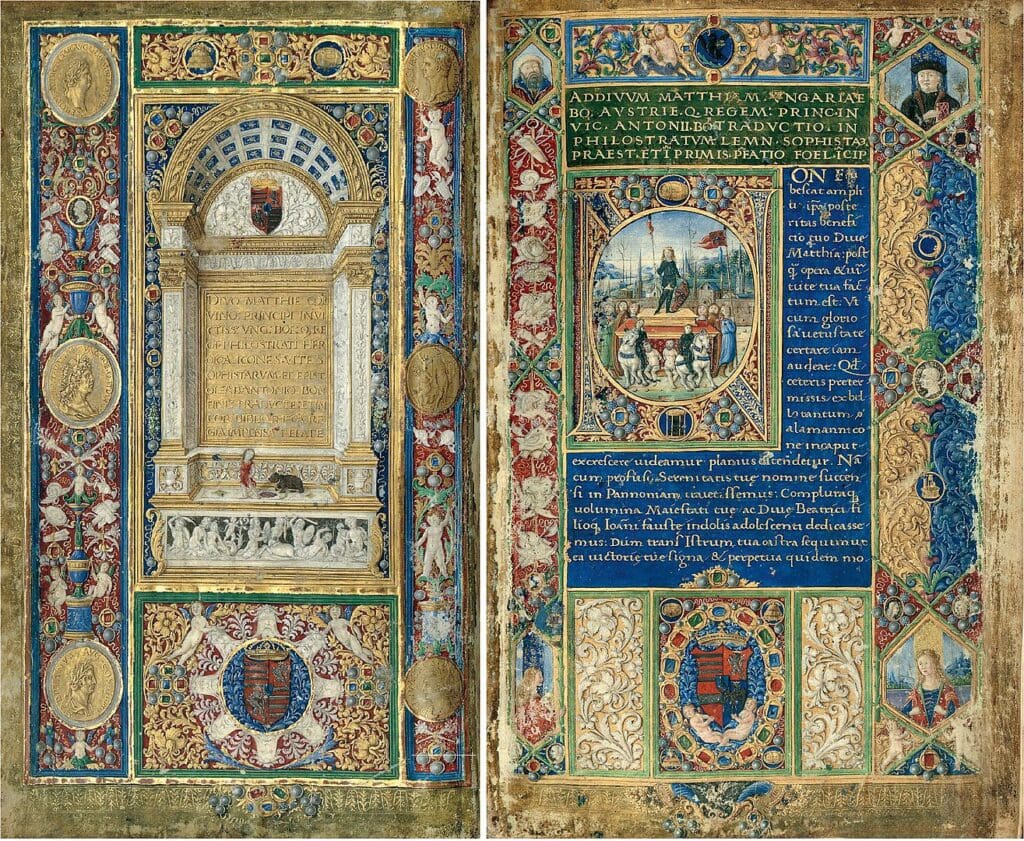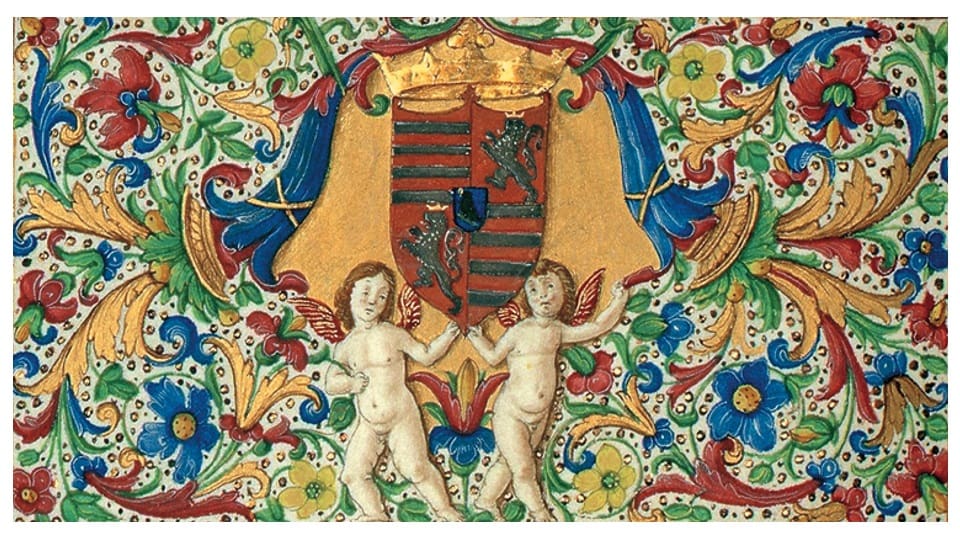In February 2024, it was reported in the Hungarian press that new manuscripts from the library of King Matthias (reigned 1458–1490) were available on the Internet. Two new items from King Matthias’s former Corvina library became available for online viewing to the public as part of the Hungarian–Turkish Cultural Year. They include the manuscript of his landmark work Ptolemy’s Geographia, which is kept in the Topkapi Serai Museum in Istanbul, Türkiye. This is the result of a year-long project by the National Széchényi Library to make digital copies of the manuscripts available virtually, reuniting the royal library that has been scattered over the centuries1. Of course, the royal library had a history.
The beginnings of the book culture in Hungary coincided with the establishment of the Latin Christian church organization from the early 11th century. It is no coincidence that the first library catalogue that has survived is from the Benedictine Abbey of Pannonhalma, dating from around 1090. This catalogue, of course, contained the manuscripts needed for daily operations, mainly Bibles, biblical commentaries, and liturgical books.
The royal court did not need a separate collection of books for a long time, as the lawbooks and chronicles necessary for the administration of the country were all kept in the royal priory founded by the first king in Fehérvár. The extracts of the most important documents issued by courts were kept in the so-called royal register books, which were certainly kept from the 14th century onwards.
The early kings themselves were not all literate,
although King Coloman (reigned 1095–1116) was originally intended to be a priest and had an unrivalled knowledge of canon law for his time. At the end of the 12th century, during the reign of King Béla III (reigned 1171–1196), who was raised to be the heir to the Byzantine throne and could also read Greek, a chancery was organized, but no library is known to have been founded.
After 1301, under the Angevin kings who came from Italy to the Hungarian throne, the court became European in representation, but there was still no royal collection. Books were certainly brought from Naples, and some may even have found their way into the library of King Matthias. It is no coincidence, however, that their memory is preserved in the luxurious codices they commissioned.

The so-called Anjou Legendarium, the Chronicon Pictum (now in Budapest), or a volume of Pseudo Aristotle (now in Oxford), which has been dismantled into pages, can be linked to their reign. Modern technology has made it possible to reunite the pages of the Anjou Legendarium, which are now preserved in several places (Vatican, New York, Berkeley, St Petersburg, Paris), and to make them available in facsimile editions2.
Of all the Hungarian kings, only Sigismund (1387–1437) became Holy Roman Emperor. During his reign, he travelled throughout much of Europe, spending months in Italy. However, he had no passion for book collecting, which was all the more remarkable since libraries were part of the representation of the secular princely courts in Italy at that time.
In Central Europe, Hungary was the first country to develop close cultural links with Italy,
being one of the first to spread the Renaissance style north of the Alps. This was thanks to humanist scholars such as the Archbishop of Esztergom János Zrednai Vitéz, and the most famous poet of the time, Janus Pannonius.
Their book collections were also incorporated into King Matthias’s library, now known as the Bibliotheca Corviniana3. This can be considered the first royal library to be consciously established and developed. It began to flourish especially after Matthias’s marriage to Beatrix, daughter of the King of Naples (1476). The queens always had prayer books for personal use, the possession of which was part of being a pious queen. However, the educated Beatrix completely transformed the court of Buda, and in her wake came the great representatives of the Italian Renaissance.
King Matthias was keen to put the literati and manuscripts at the service of his royal representation. From then on, the library was inseparable from the machine of representation that operated in Buda. His father, János Hunyadi, was still an illiterate mercenary general, but he provided a meticulous education for his son destined for the throne. Matthias had learned German, Italian, and also spoke a Slavic language. He wanted to hear what Naldo Naldi of Italy wrote about him in praise of his library: ‘And though all that you are doing now, Matthias, far surpasses the great deeds of the kings of today who now live on earth, whom Phoebus looks down on from on high, who are surrounded by the ocean with its waves.’
The library’s holdings are estimated at around 2,000 volumes, most of them parchment codices, but there were also a few printed books. The growth was interrupted by the death of the king, while 150 manuscripts were being made in Florence alone. These never reached Buda, but are now included in the library’s collection.
At the time, only the Vatican library surpassed the Buda collection with 3,500 volumes;
the other collections were much smaller, with the Dukes of Burgundy having 750 volumes and the Duke of Ferrara having 500.
Part of the increase may have been due to copies dedicated to the king by the humanists of the time, but the greater part was brought to Buda by the king himself. Not only did Matthias work with the best book painters of the time in Italy, but he also established a prestigious codex copying workshop in Buda. The volumes were decorated with the coat of arms of Matthias, and the richly decorated bindings gave the codices their individual character. Some of the volumes were bound in silk or velvet and decorated with ornate embossings.
The Corvina was not a library intended for public use; only those who visited the courtyard could use it. The library was located in the wing of the palace in Buda facing the Danube, next to the throne room. It occupied two high vaulted rooms, one for Greek and the other for Latin authors. They were placed on carved, gilded pedestals running along the walls, covered with coloured shrouds to protect them from dust. Between the stained-glass windows overlooking the Danube stood the royal rostrum, where the king read or conversed with his humanists.
The works of every worthwhile representative of humanist literature were held there, Latin clergymen and a great number of other Latin writers, but there were also works on natural history, and even a volume on the art of warfare in two copies.
The manuscripts were subsequently corrected, which is an indication of the care taken with the texts. One of the most eminent proofreaders was the Archbishop himself, János Vitéz Zrednai. Mátyás commissioned not only the purchase and copying of books, but also the translation of Greek and Italian works and the writing of original works. The fact that 87 Hungarian entries have survived in one of the medical manuscripts is an indication of the use of Hungarian in the period.

With the death of Matthias, the library’s stock began to disperse, although its value was recognized by contemporaries4. The nobles of the country, after depriving Matthias’s illegitimate son John Corvinus of his claim to the throne, obliged him to take books from his father’s library only with their consent. Nevertheless, foreign humanists visiting Buda acquired a number of volumes for themselves. On other occasions, Matthias’s successors gave away items from his library out of goodwill, especially when they wished to please foreign envoys, such as the envoy of King Henry VIII of England. The scholarly world held the collection in high esteem. In the Vatican Palace, Pope Paul V (1605–1621) painted some of the world’s most famous libraries, including King Matthias’s library in Buda.
In 1526, the Buda Palace was tragically robbed by Ottoman troops arriving with Sultan Suleiman I and the library was transported to Istanbul, where it was housed in the Topkapi Palace. Of these, 16 manuscripts were returned as gifts from the Turkish sultans in 1868 and again in 1877.
However, the memory of the library has remained part of the growing legacy of Matthias in Hungary.
Afterwards, the Habsburg monarchs and the Transylvanian princes who came to the Hungarian throne all had the restoration of the library as one of their goals. The library’s manuscripts are not only a museum treasure of European cultural history, but they have also been a living element of Hungarian historical consciousness for centuries.
The history of King Matthias’s library is interesting because it is the most fragile part of the culture of the period destroyed by the Ottoman conquest that has preserved the most memories. During wars and fires, manuscripts are caught in the flames. But not only the Bibliotheca Corviniana has survived into the 21st century, nearly a tenth of its holdings have survived as well. In 2005, the Bibliotheca Corviniana was inscribed on the UNESCO World Memory List. The number of authentic Corvinae is now estimated at nearly 220 copies, held in some 50 libraries around the world, with 55 Corvinae currently in Hungary.
Related articles:
1 Bibliotheca Corvina Virtualis. https://www.oszk.hu/content/bibliotheca-corviniana-digialis
2 Ferenc Levárdy (ed.), Magyar Anjou Legendárium. Facsimile edition, Budapest,1973.(in Hungaran and Polish verson)
3 Csaba Csapodi, The Corvinian Library. History and Stock. Budapest, 1973.
4 Marcus Tanner, The Raven King : Matthias Corvinus and the Fate of His Lost Library. New Haven (Conn.), 2009.







